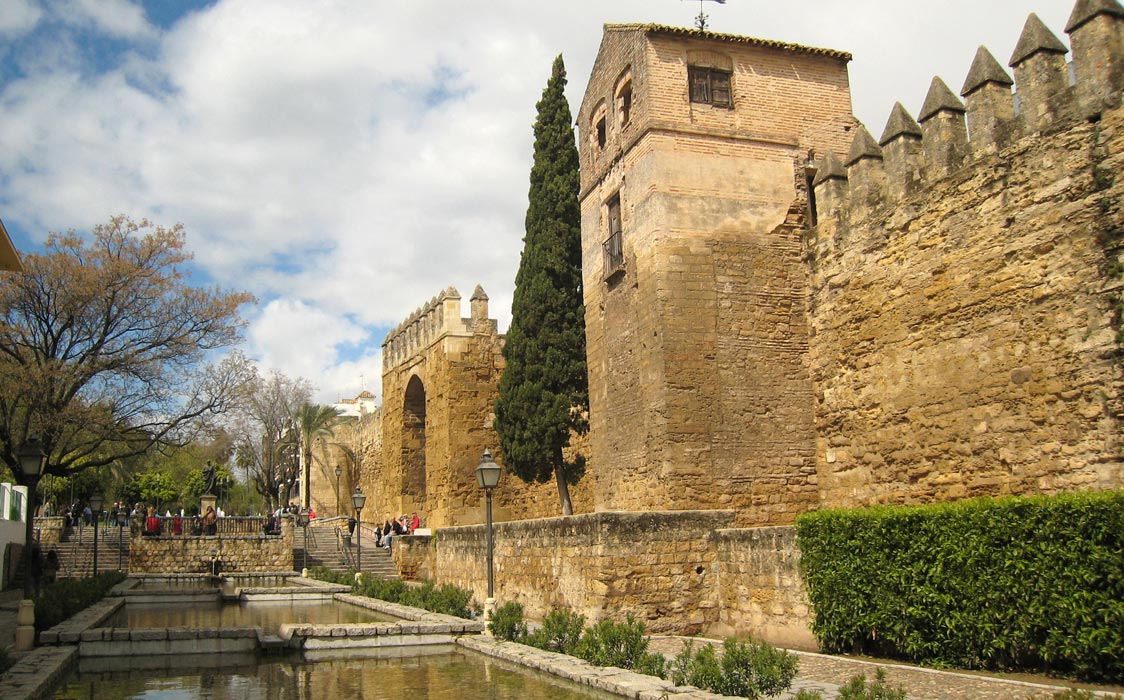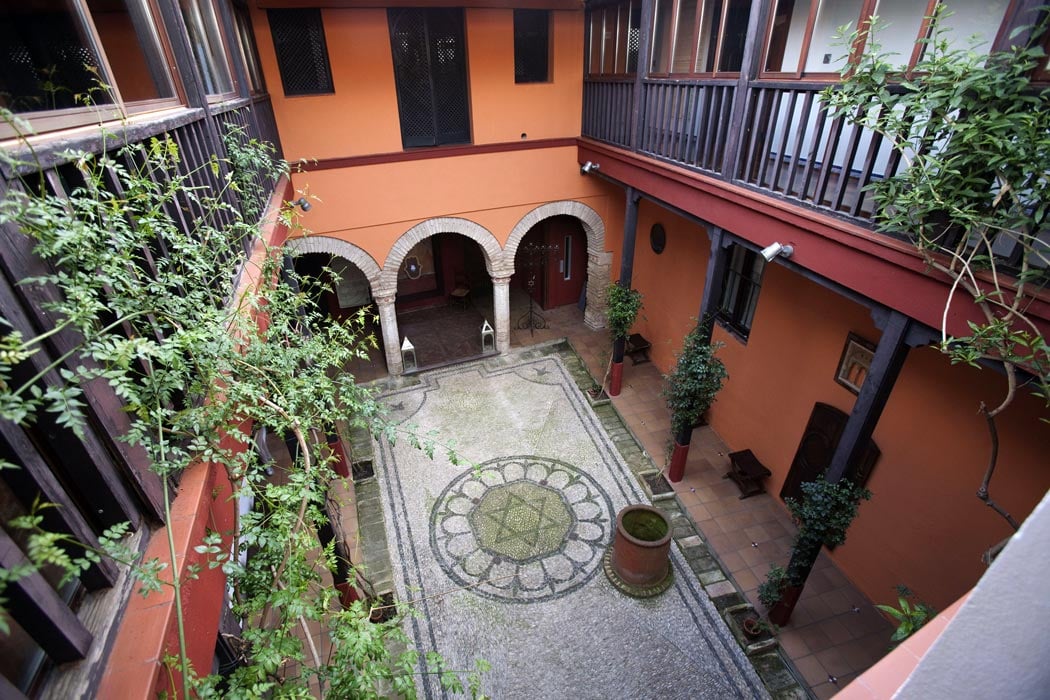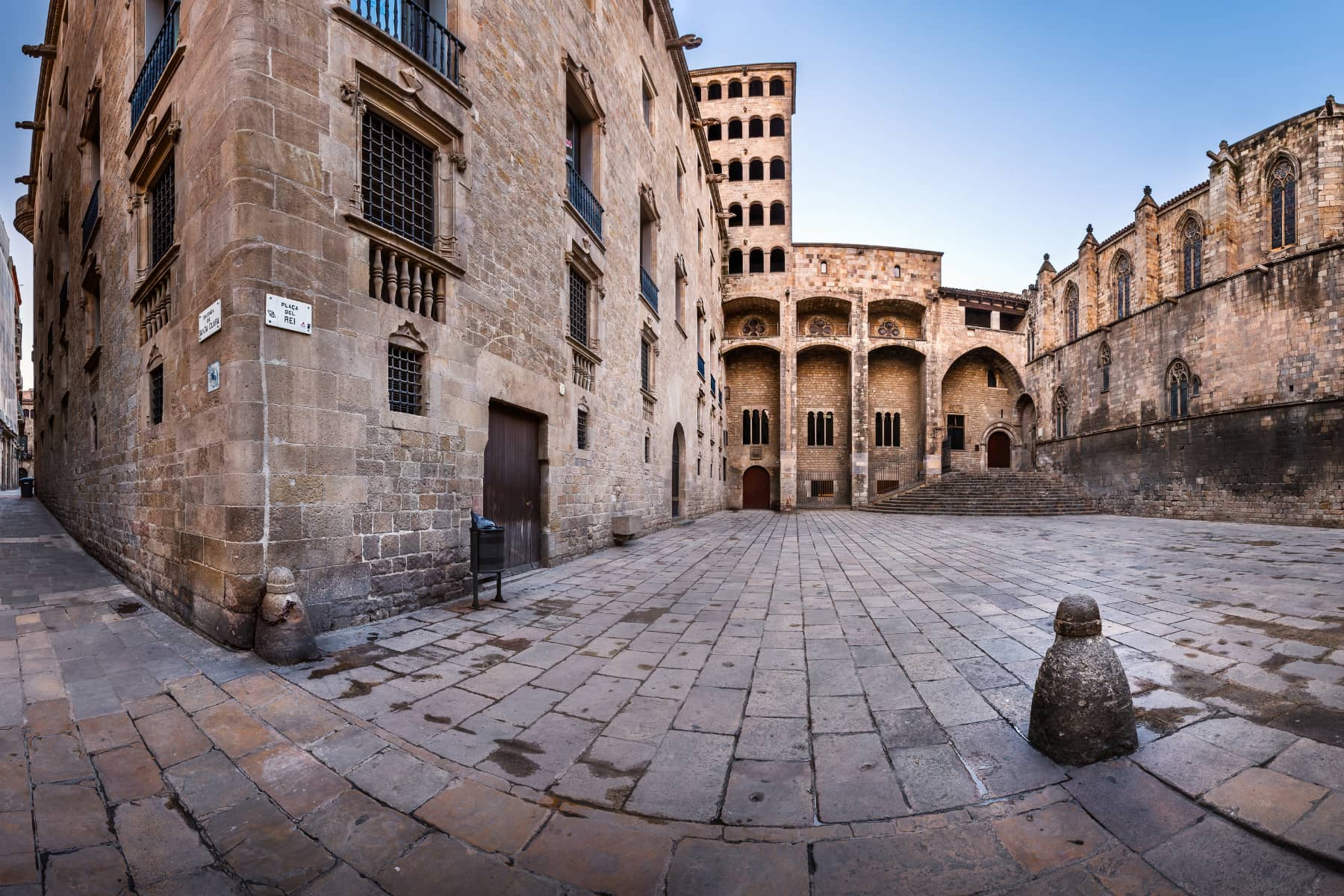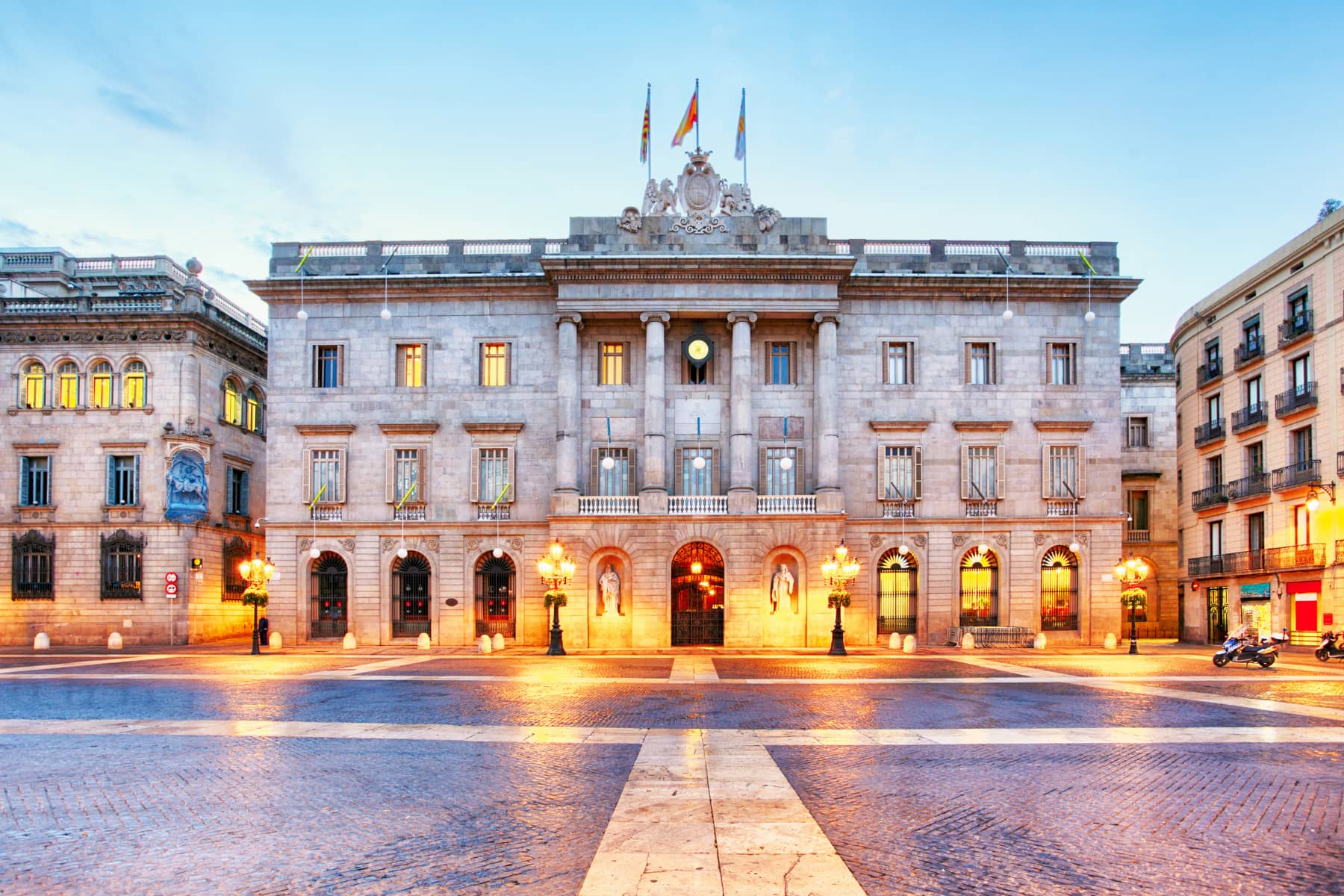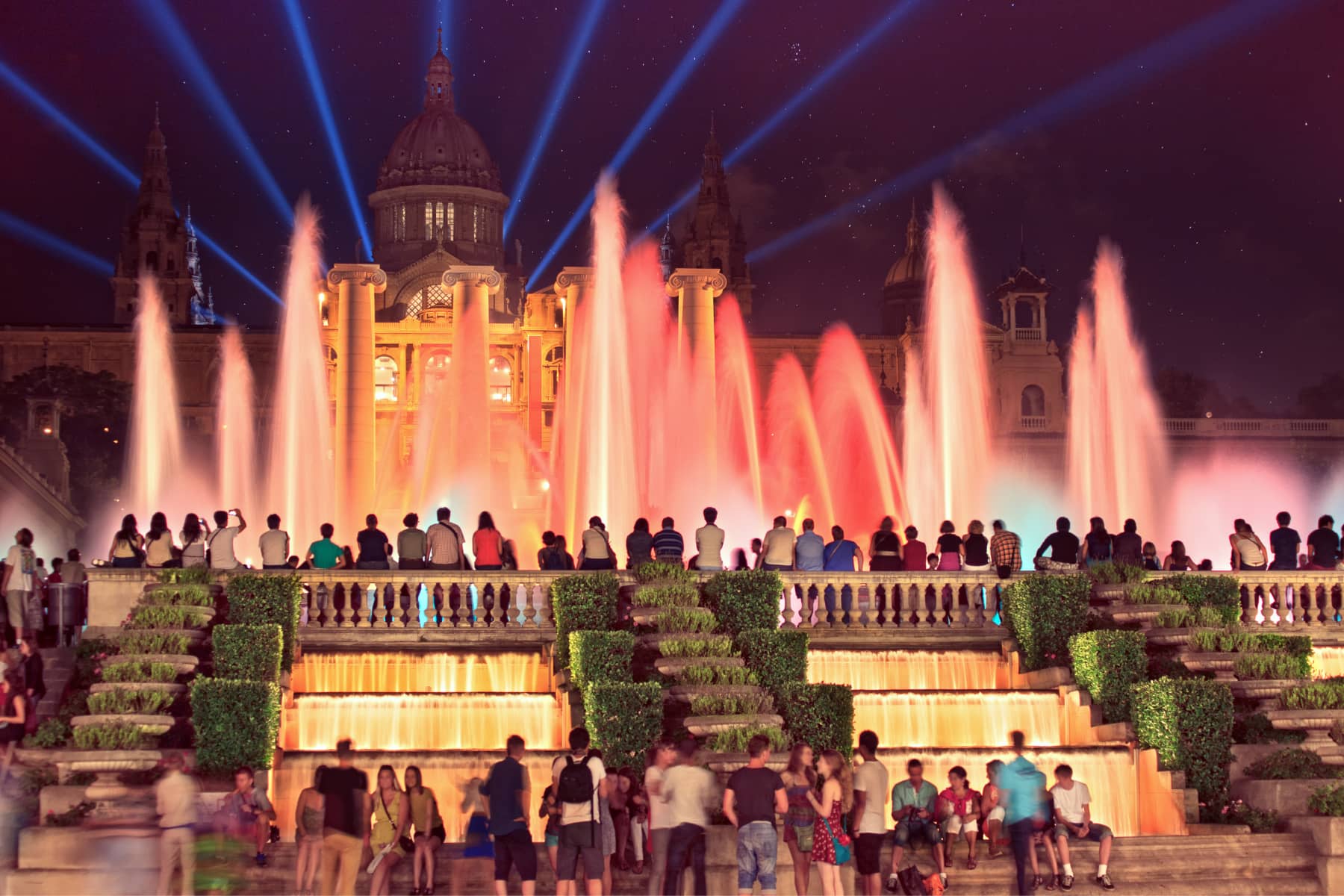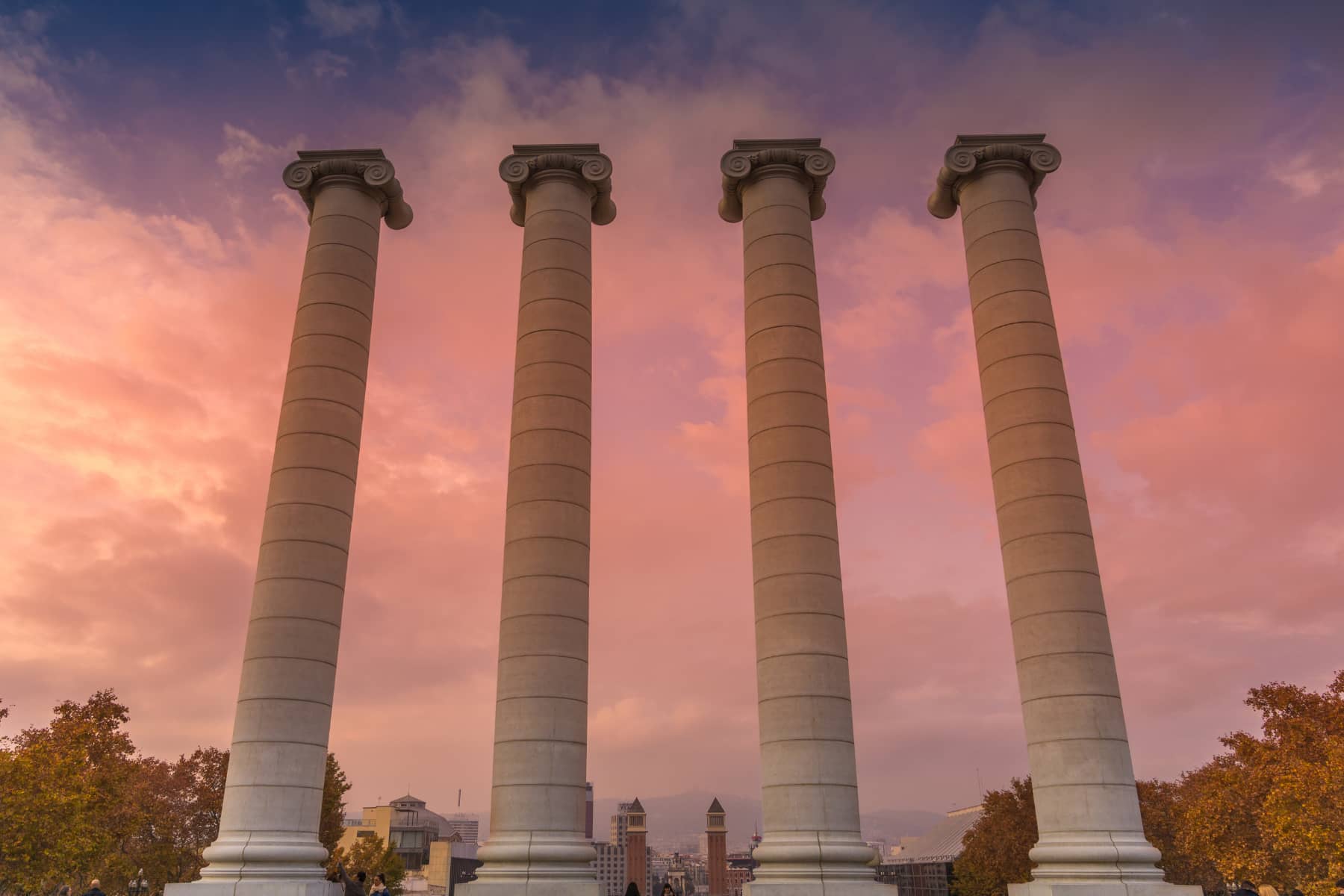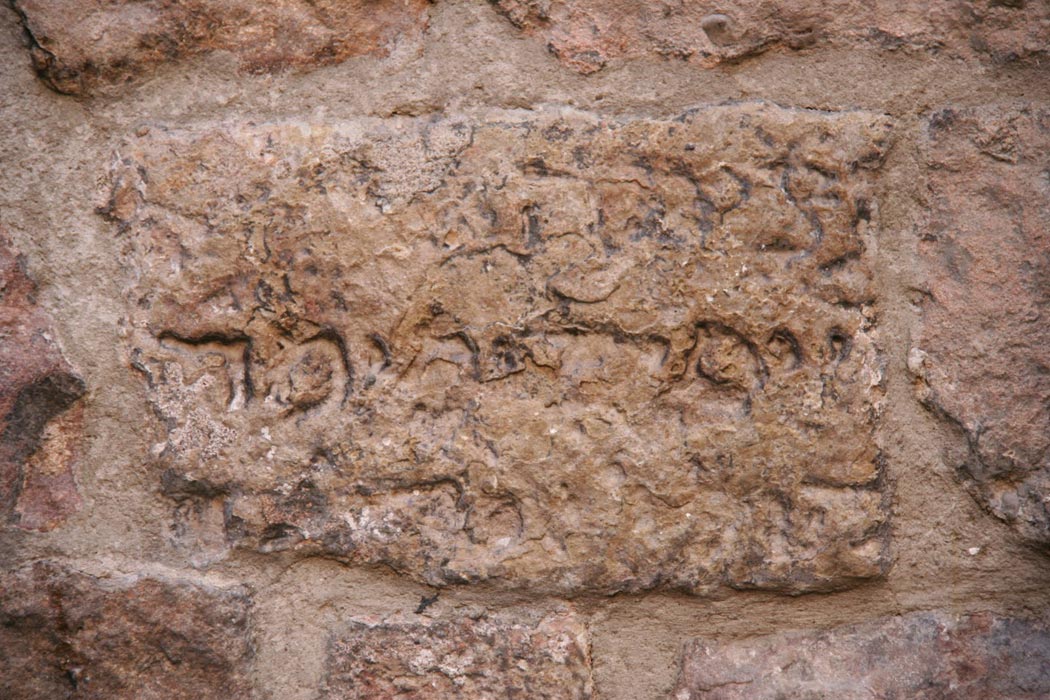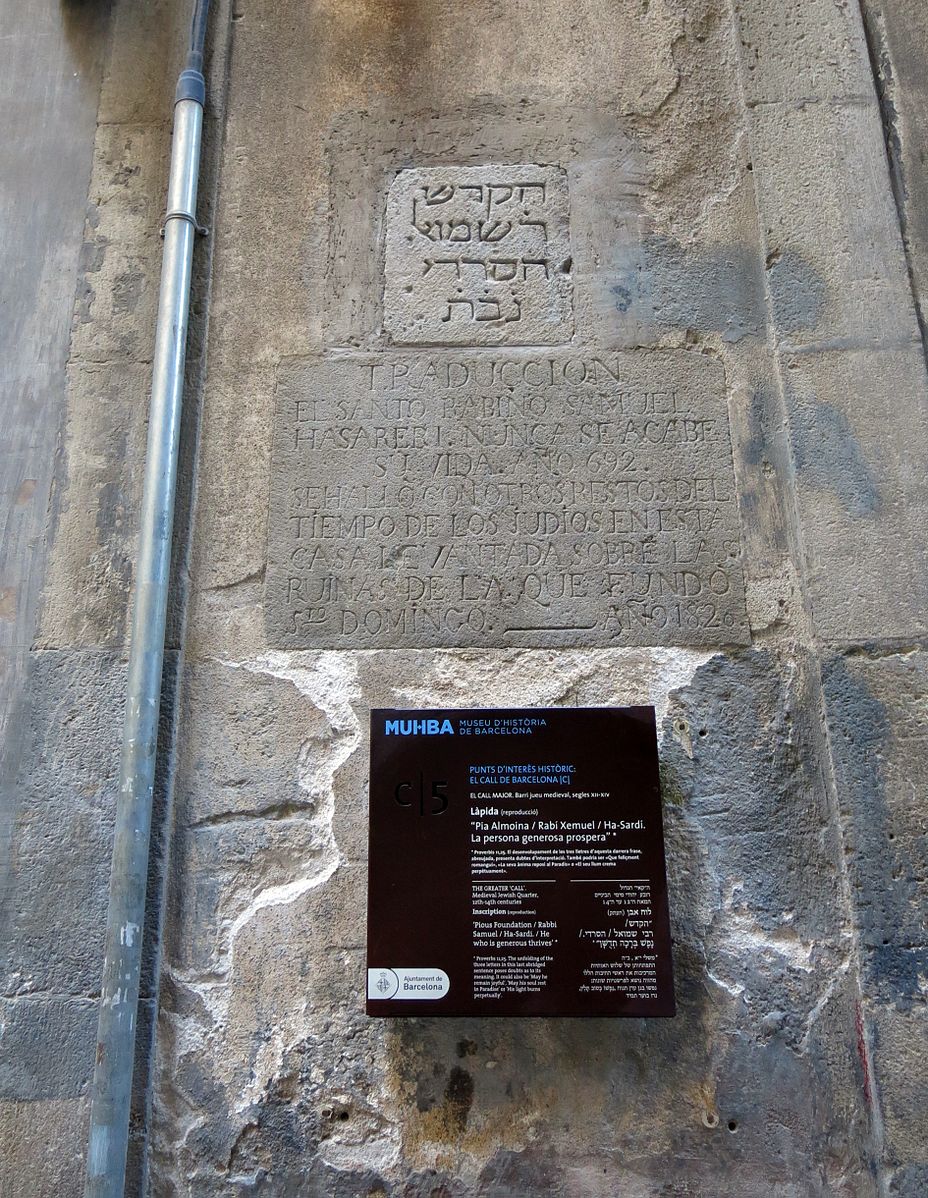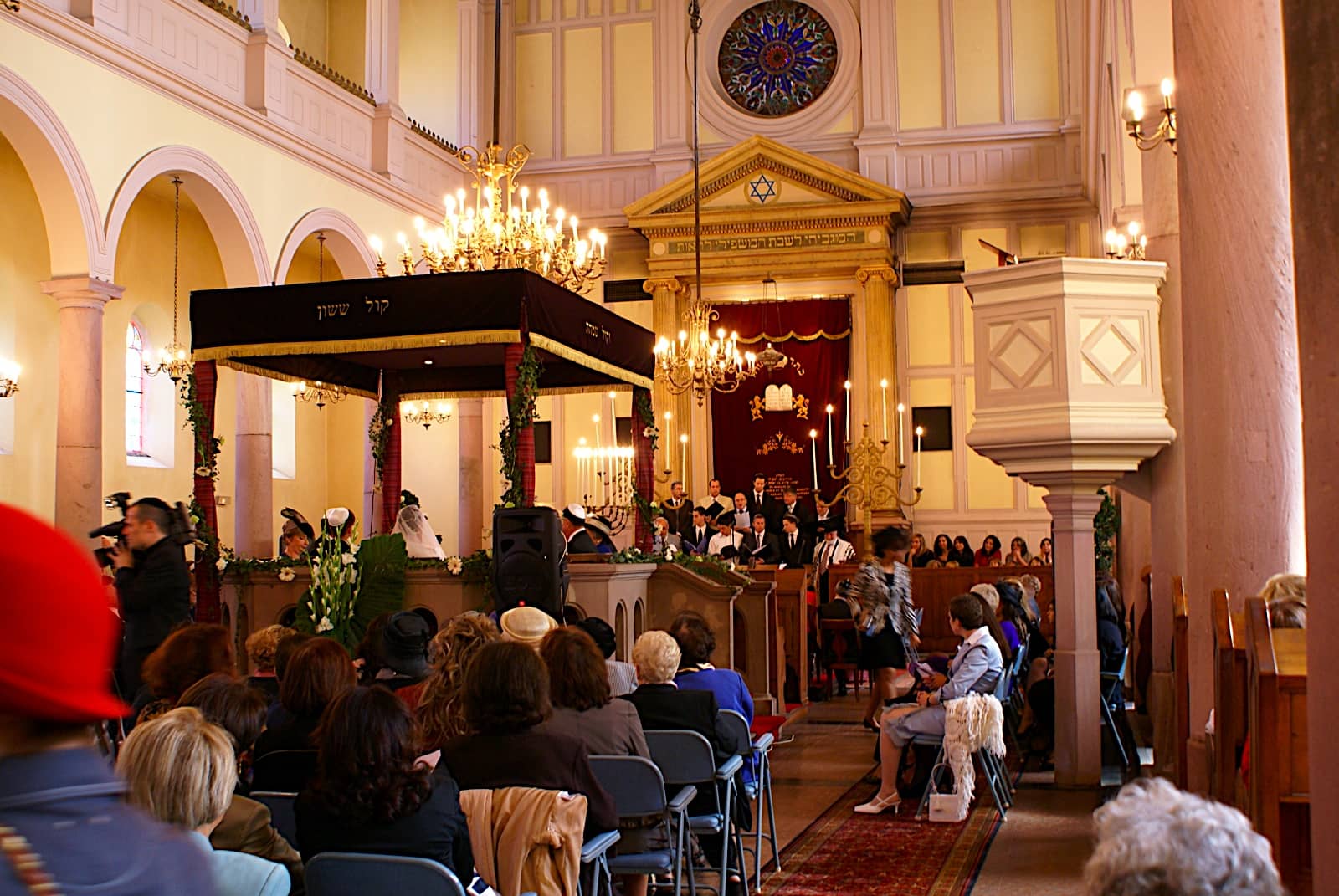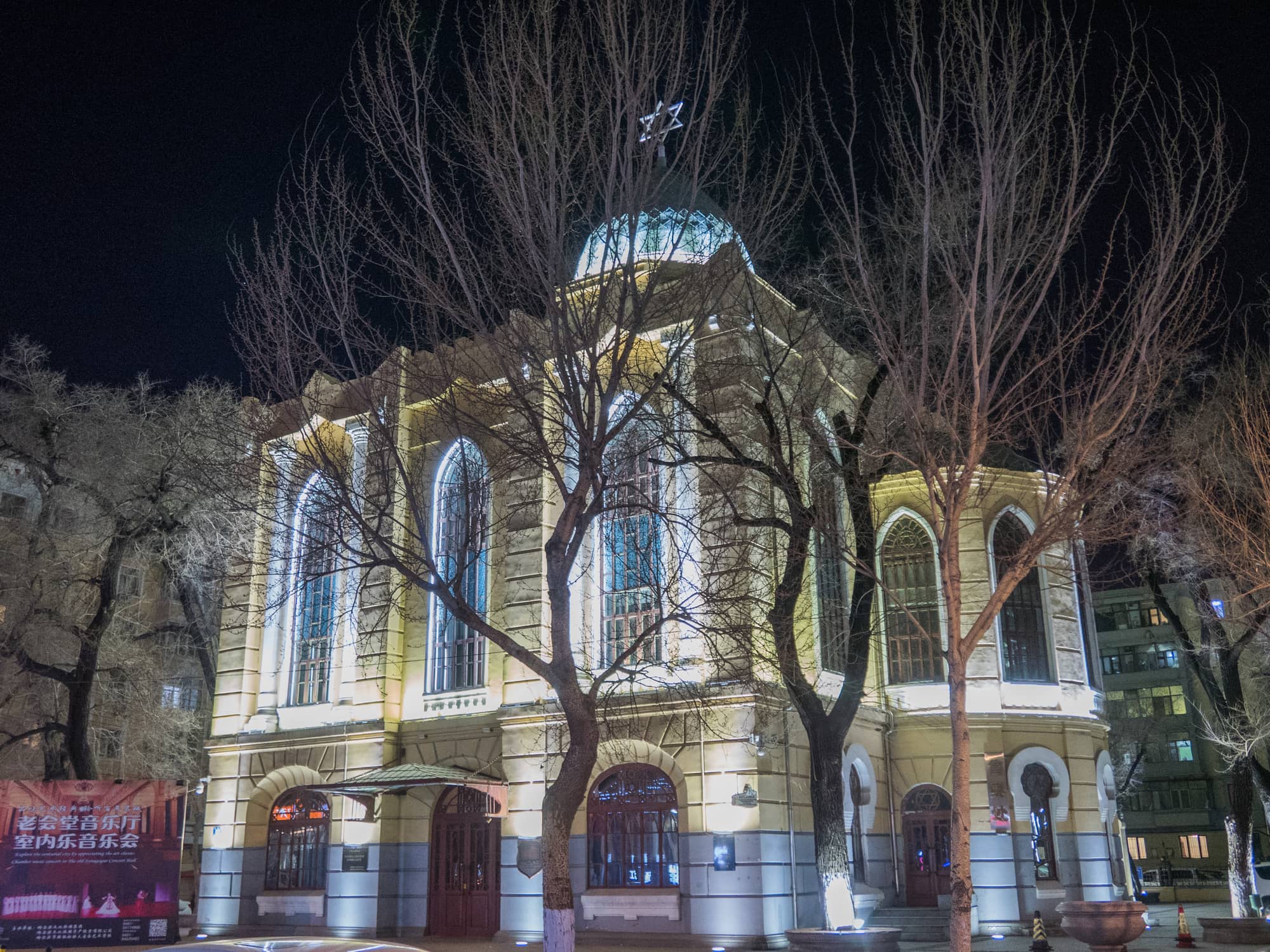The Gate of Almodóvar, known as the Puerta del Nogal (walnut gate or Bad-al-Chawz), is of Arab origin. The gate of Almodóvar once closed the Jewish Quarter, but today, welcomes the Jews between fountains and walls that surround the Jewish quarter. This gate, greatly remodelled in the Christian era, underwent a further major renovation in the 16th century, later being restored in 1802, and more recently, in the 1960’s. It is the sole surviving example of the systematic destruction of walls and gates which started in the late 18th century. This disaster originated from demographic expansion experienced by the city after its calmness for three centuries. The whole walled stretch to the south of the gate is conserved which is prolonged as far as Campo Santo de los Mártires throughout Cairuán street. This wall, seriously remodelled in the 14th century, underwent major restoration in the 1960’s carried out by José Rebollo who added the moat and the lower promenade which surrounds it.
Site Tag: Attraction
Sefarad House (Casa de Sefarad)
Directly facing the synagogue, casa de Sefarad, or the House of Memory is a 14th century property which is linked, according to various sources, to the Jewish temple. The coloured circles of the courtyard chapter are one of the original elements of this building, restored conscientiously to recreate the spirit of the Cordoban Jews. The Sepharad House, home of memory, is a private initiative dedicated to the interpretation and promotion of Sephardi heritage. Now, the Casa de la Memoria (House of Memory) is a cultural centre where concerts and acts of many kinds are staged and it boasts a specialised library and shop where you can find a wide range of Jewish-related objects.
Rei Square (Placa de Rei)
Plaza del Rei, the King’s square, is located in the center of the Gothic District, radiating its cultural charm. Here, you can find the Palau Reial alongside, where the notorious Disputation of Barcelona ran its course in 1263, between the Dominican convert Pau Cristià, a great polemicist and expert in the Talmud, and the Jew from Girona, Moses ben Nahman, or Nahmanides, one of the great learned men of the age.
The Plaça Reial stands in front of the former palace of the King of Aragon, location of the famous Disputation of Barcelona, a contest of words between Nahmanides, the Kabbalist of Girona who had close ties with the King, and Pablo Cristiani from Montpellier, a Jew who had converted to Catholicism. The debate went on for 4 days, with topics ranging from debates around the Messiah to which religion showed the truth. The aim of such debates was to show the flaws in Judaism in front of an angry public, humiliating Rabbis who were not allowed to ask questions, but merely defend those presented to them. Though King Jaume I said that “never before had he heard an unjust cause so nobly defended”, and had a good relationship to Nahmanides, he still banished him, albeit with a large sum of money in his hand.
Plaza Sant Jaume
Situated in the heart of the old district, Sant Jaume Square is located on the former forum of the Roman city and indicates the limit of Call mayor, or the main Jewish quarters in Barcelona which opened out to the northwest. Today, the square is a true symbol of Catalan public life. However, in the Middle Ages the square was little more than a widening between the current Llibretería and Call streets. Jews have been a presence here in Plaza Sant Jaume with their houses and workshops around the square, all being documented here outside the limits of the district just like other Spanish cities. Jews were able to live all over Barcelona before the royal decrees required them to be concentrated in a specific space.
Magic Fountain of Montjuïc
The Magic Fountain of Montjuïc is a fountain located at the head of Avinguda Maria Cristina in the Montjuïc neighborhood of Barcelona, Spain. The fountain is situated below the Palau Nacional on the Montjuïc mountain and near the Plaça d’Espanya and Poble Espanyol de Barcelona. Remains of a medieval Jewish cemetery have been found at Montijuic and the name of the hill translates to “Jewish Mountain,” named for the Jewish community living in the area.
Montjuic Jewish Cemetery
Montjuïc is a hill in Barcelona, Catalonia, Spain. It is translated as “Jew Mountain” in medieval Catalan. It is believed to have this name because of Jewish settlements and a Jewish cemetery which were once there. Because of the mountain’s strategic location on the Mediterranean and alongside the Llobregat River, this region became the perfect location for the city of Barcelona to develop.
There is evidence of the Jewish cemetery of Barcelona since the eleventh century. In 1391, with the attack on the Call of Barcelona, several tombstones were looted to be sold, and it was not until the 20th century that architectural remains were found again. Thus, in 1945, 171 graves were found after the construction of some pavilions in the area, and in 2001 an excavation uncovered 557 tombs and a tombstone.
Sant Lu’s Square (Plaça de Sant Lu)
This square hosts the vestiges of one of the most dramatic episodes of Barcelona’s Jewish history. On the walls of one of the building one can still see the hebrew inscriptions from the tombstones that were used to build the Palau del Lloctinent sometime after the Jewish community was expelled. At the time of the construction of the Palau del Lloctinent, the Jewish quarter had already been razed and after 1492, with the expulsion order that the Catholic Monarchs gave to the entire community, theoretically there were no Jews left in the city. Since the Jewish necropolis had already been dismantled, some of its tombstones were reused as building materials. At the facade of the same type building in the Plaza del Rey, near the Salón del Tinell and at ground level you can also see some stones with Jewish inscriptions.
Hebrew Inscriptions at Marlet Street
Marlet Street starts with a headstone recalling the figure of Rabbi Samuel Ha-Sardi. This headstone was discovered in 1820 during construction work on the nearby buildings. The transcription, which appears on the headstone, are from 1826, and a modern interpretation would read: “Pious Foundation of Rabbi Samuel Ha-Sardi: its light burns evermore.” The headstone at Marlet street is now a replica and the original can be seen on display at the History Museum of Barcelona.
Synagogue of Colmar
Colmar is one of the oldest communities in Alsace and a synagogue is mentioned as early as in the 13th century, destroyed by fire in 1279. During the massacre of the Jews, burned alive in 1349, the city confiscated the synagogue. The Jewish community and its synagogue began again around 1380 but vanished in 1512, when Colmar expelled the Jews. Again, the synagogue was confiscated by the city.
During the revolution, some Jews were able to return to Colmar. In 1823, the consistory based in Wintzenheim, the largest community in the Upper Rhine, was transferred to Colmar.
After praying in various oratories, the community built a monumental synagogue, in a neo-Romanesque style, which was inaugurated on September 15th 1843. It was renovated in 1885 and 1913, with the addition of an extra gallery for women, and the replacement of the central wooden platform by a sandstone platform. During World War II, the Germans used the synagogue as an auction house for furniture stolen from expelled Jews, and then turned it into an arsenal. The ransacked building was restored after the Liberation and inaugurated in 1961. The synagogue has been registered as a historical monument since July 1984.
Harbin Old Synagogue Concert Hall
The Harbin Old Synagogue Concert Hall is a concert hall in Harbin, Heilongjiang Province, China, and formerly the old synagogue of Harbin from 1909 to 1963. Upon its renovation in 2014, it was reopened as a major concert hall in the city.
The city of Harbin was home to thousands of Jews. The number of Jewish diasporas living in Harbin was over 20,000 in the 1920s, making Harbin the largest gregarious center for Jews in the Far East. On 15 January 1909, the hall opened as Harbin General Synagogue (哈尔滨犹太总会堂), the main Jewish religious site for the city. The former Jewish middle school was adjacent to the synagogue, whose site is still well preserved and was transferred into a music school.
In June 1931, the building was devastated by a great fire and was refurbished. Abraham Kaufman, then leader of Harbin Jewish community, was working in the synagogue from 1919 to 1945. In 2013, over 1 billion Chinese yuan was spent by Harbin municipal government on the refurbishment of the building and transfer to a music hall. The hall reopened in 2014.
Image credit: Trip.com
